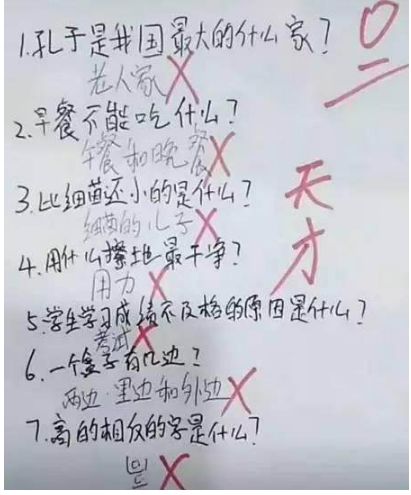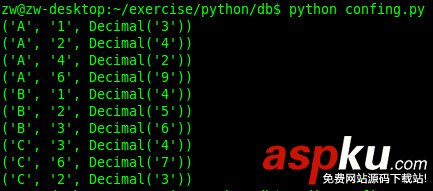进程、线程和协程之间的关系和区别也困扰我一阵子了,最近有一些心得,写一下。
进程拥有自己独立的堆和栈,既不共享堆,亦不共享栈,进程由操作系统调度。
线程拥有自己独立的栈和共享的堆,共享堆,不共享栈,线程亦由操作系统调度(标准线程是的)。
协程和线程一样共享堆,不共享栈,协程由程序员在协程的代码里显示调度。
进程和其他两个的区别还是很明显的。
协程和线程的区别是:协程避免了无意义的调度,由此可以提高性能,但也因此,程序员必须自己承担调度的责任,同时,协程也失去了标准线程使用多CPU的能力。
Python线程
定义:Threading用于提供线程相关的操作,线程是应用程序中工作的最小单元。
#!/usr/bin/env python# -*- coding:utf-8 -*-import threadingimport timedef show(arg):time.sleep(1)print 'thread'+str(arg)for i in range(10):t = threading.Thread(target=show, args=(i,))t.start()print 'main thread stop
上述代码创建了10个“前台”线程,然后控制器就交给了CPU,CPU根据指定算法进行调度,分片执行指令。
更多方法:
•start 线程准备就绪,等待CPU调度
•setName 为线程设置名称
•getName 获取线程名称
•setDaemon 设置为后台线程或前台线程(默认)
如果是后台线程,主线程执行过程中,后台线程也在进行,主线程执行完毕后,后台线程不论成功与否,均停止
如果是前台线程,主线程执行过程中,前台线程也在进行,主线程执行完毕后,等待前台线程也执行完成后,程序停止
•join 逐个执行每个线程,执行完毕后继续往下执行,该方法使得多线程变得无意义
•run 线程被cpu调度后自动执行线程对象的run方法
线程锁
由于线程之间是进行随机调度,并且每个线程可能只执行n条执行之后,CPU接着执行其他线程。所以,可能出现如下问题:
import threadingimport timegl_num = 0def show(arg):global gl_numtime.sleep(1)gl_num +=1print gl_numfor i in range(10):t = threading.Thread(target=show, args=(i,))t.start()print 'main thread stop' import threadingimport timegl_num = 0lock = threading.RLock()def Func():lock.acquire()global gl_numgl_num +=1time.sleep(1)print gl_numlock.release()for i in range(10):t = threading.Thread(target=Func)t.start()
event
python线程的事件用于主线程控制其他线程的执行,事件主要提供了三个方法 set、wait、clear。
事件处理的机制:全局定义了一个“Flag”,如果“Flag”值为 False,那么当程序执行 event.wait 方法时就会阻塞,如果“Flag”值为True,那么event.wait 方法时便不再阻塞。
•clear:将“Flag”设置为False
•set:将“Flag”设置为True
#!/usr/bin/env python# -*- coding:utf-8 -*-import threadingdef do(event):print 'start'event.wait()print 'execute'event_obj = threading.Event()for i in range(10):t = threading.Thread(target=do, args=(event_obj,))t.start()event_obj.clear()inp = raw_input('input:')if inp == 'true':event_obj.set() Python 进程
from multiprocessing import Processimport threadingimport timedef foo(i):print 'say hi',ifor i in range(10):p = Process(target=foo,args=(i,))p.start()
注意:由于进程之间的数据需要各自持有一份,所以创建进程需要的非常大的开销。
进程数据共享
进程各自持有一份数据,默认无法共享数据
#!/usr/bin/env python#coding:utf-8from multiprocessing import Processfrom multiprocessing import Managerimport timeli = []def foo(i):li.append(i)print 'say hi',lifor i in range(10):p = Process(target=foo,args=(i,))p.start()print ('ending',li) #方法一,Array
from multiprocessing import Process,Arraytemp = Array('i', [11,22,33,44])def Foo(i):temp[i] = 100+ifor item in temp:print i,'----->',itemfor i in range(2):p = Process(target=Foo,args=(i,))p.start() #方法二:manage.dict()共享数据
from multiprocessing import Process,Managermanage = Manager()dic = manage.dict()def Foo(i):dic[i] = 100+iprint dic.values()for i in range(2):p = Process(target=Foo,args=(i,))p.start()p.join() 'c': ctypes.c_char, 'u': ctypes.c_wchar,'b': ctypes.c_byte, 'B': ctypes.c_ubyte,'h': ctypes.c_short, 'H': ctypes.c_ushort,'i': ctypes.c_int, 'I': ctypes.c_uint,'l': ctypes.c_long, 'L': ctypes.c_ulong,'f': ctypes.c_float, 'd': ctypes.c_double
当创建进程时(非使用时),共享数据会被拿到子进程中,当进程中执行完毕后,再赋值给原值。
#!/usr/bin/env python# -*- coding:utf-8 -*-from multiprocessing import Process, Array, RLockdef Foo(lock,temp,i):"""将第0个数加100"""lock.acquire()temp[0] = 100+ifor item in temp:print i,'----->',itemlock.release()lock = RLock()temp = Array('i', [11, 22, 33, 44])for i in range(20):p = Process(target=Foo,args=(lock,temp,i,))p.start() 进程池
进程池内部维护一个进程序列,当使用时,则去进程池中获取一个进程,如果进程池序列中没有可供使用的进进程,那么程序就会等待,直到进程池中有可用进程为止。
进程池中有两个方法:
•apply
•apply_async
#!/usr/bin/env python# -*- coding:utf-8 -*-from multiprocessing import Process,Poolimport timedef Foo(i):time.sleep(2)return i+100def Bar(arg):print argpool = Pool(5)#print pool.apply(Foo,(1,))#print pool.apply_async(func =Foo, args=(1,)).get()for i in range(10):pool.apply_async(func=Foo, args=(i,),callback=Bar)print 'end'pool.close()
pool.join()#进程池中进程执行完毕后再关闭,如果注释,那么程序直接关闭
协程
线程和进程的操作是由程序触发系统接口,最后的执行者是系统;协程的操作则是程序员。
协程存在的意义:对于多线程应用,CPU通过切片的方式来切换线程间的执行,线程切换时需要耗时(保存状态,下次继续)。协程,则只使用一个线程,在一个线程中规定某个代码块执行顺序。
协程的适用场景:当程序中存在大量不需要CPU的操作时(IO),适用于协程;
greenlet
#!/usr/bin/env python# -*- coding:utf-8 -*-from greenlet import greenletdef test1():print 12gr2.switch()print 34gr2.switch()def test2():print 56gr1.switch()print 78gr1 = greenlet(test1)gr2 = greenlet(test2)gr1.switch()
gevent
import geventdef foo():print('Running in foo')gevent.sleep(0)print('Explicit context switch to foo again')def bar():print('Explicit context to bar')gevent.sleep(0)print('Implicit context switch back to bar')gevent.joinall([gevent.spawn(foo),gevent.spawn(bar),]) 遇到IO操作自动切换:
from gevent import monkey; monkey.patch_all()import geventimport urllib2def f(url):print('GET: %s' % url)resp = urllib2.urlopen(url)data = resp.read()print('%d bytes received from %s.' % (len(data), url))gevent.joinall([gevent.spawn(f, 'https://www.python.org/'),gevent.spawn(f, 'https://www.yahoo.com/'),gevent.spawn(f, 'https://m.vevb.com/'),]) 以上所述是小编给大家介绍的Python中的进程、线程、协程的相关知识,希望对大家有所帮助!



















